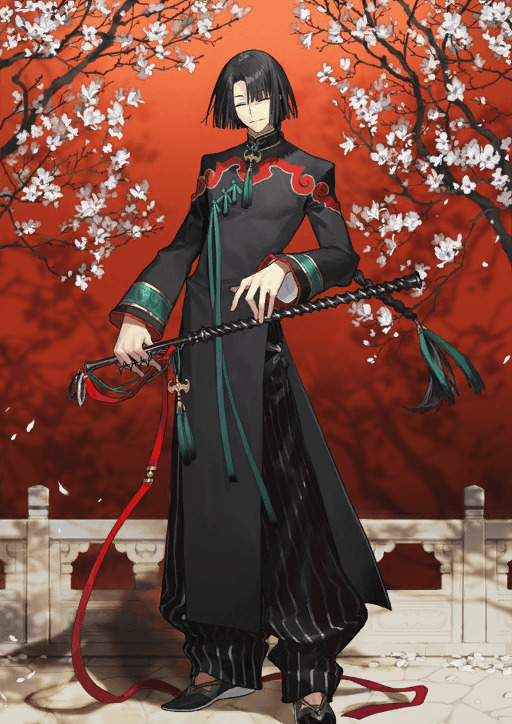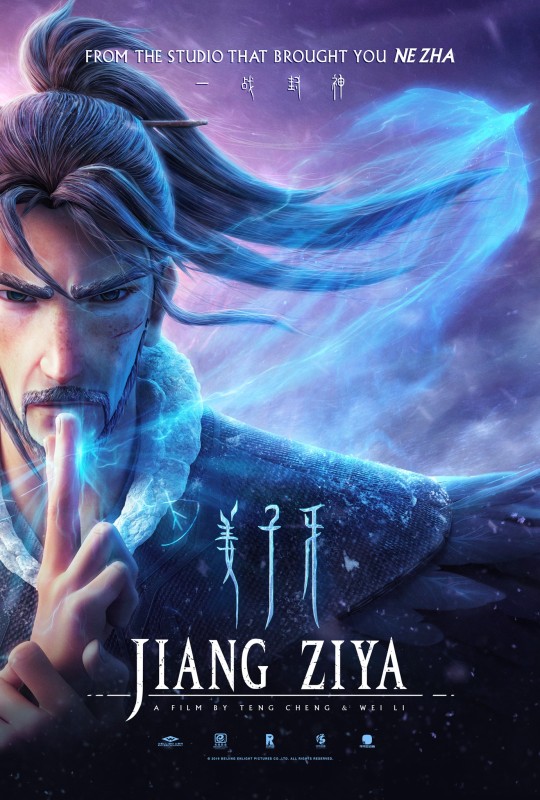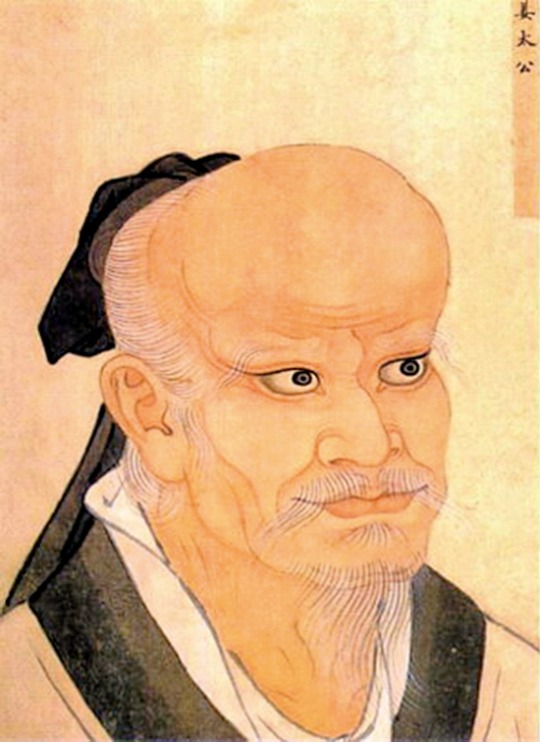#oh yeah also yugiri doesn't have any clean parallels so I'm leaving her off for now but she is by far my favorite character in stormblood
Text
Thoughts about the Doman Liberation Front
I think it’s pretty safe to say that multiple details of this part of Stormblood were based on or at least partially inspired by King Wu’s overthrow of the Shang Dynasty, more specifically taking elements from the more historical recount of the event than the version present in Investiture of the Gods (where Jiang Ziya is more of the main character but anyways) so I'm gonna take a look at the Stormblood MSQ in Yanxia with that in mind
As a quick sum-up, King Wu’s overthrow of the Shang Dynasty, specifically King Zhou of Shang, involves him uniting a bunch of neighboring provinces in China together to overthrow King Zhou cuz he was being a grade-A asshole to his citizens. Specifically, he was seduced by Daji, a fox spirit, who delighted in torture. Near the end of the rebellion when they assault King Zhou’s castle, he burns it down in an attempt to take down the rebellion with him, but this fails, resulting in his death, the execution of Daji, and the rebuilding of China into the Zhou Dynasty
I really like this slight detail change when it comes to the Doman Liberation Front in comparison to King Wu's overthrow of the Shang Dynasty. Revising it here so that it's King Wu (Hien) who decides to burn (sink) the castle really emphasizes the thematic basis behind both stories, I think. The idea that such a building isn't necessarily symbolic of a nation, and that it would be better to destroy them once they've become emblematic of corruption and oppression and instead we should have the true core of a nation, their people, rebuild a new symbol. Much more resonant than "the bad guy burned it down cuz it was a last ditch effort to stop the rebels" lol
Revising it to sinking, too, I think changes the symbolism behind the act. Instead of completely excising the terrible things that happened through burning, they denounce the corruption and oppression that they've had to bear for so many years while simultaneously preserving it, letting it continue to stand (if not out there then hidden) as a reminder of past mistakes
There’s some more stuff I wanna talk about though, especially concerning the characters that I feel have been directly pulled from the source material, specifically Hien, Gosetsu, and Yotsuyu
Hien seems to be a pretty good match for King Wu, being a prince of a fallen kingdom come back to reclaim his homeland. King Wu wasn’t a prince per se but his father was a Count of a province within the Shang Dynasty. More of the parallels are concerning Hien’s relationships with the other characters, but one I should mention that isn’t seen is Lord Kaien. Lord Kaien was imprisoned for quite a few years before being released and reinstated as a puppet ruler for Doma. He eventually plotted to drive the Garlean Empire out, but ultimately failed which leads to the events of Stormblood today. This I think directly parallels King Wen of Zhou, who was imprisoned for being too intimidating(?) to King Zhou of Shang. Stormblood had to cut out the especially gruesome detail that his eldest son tried to get him out and was ultimately CUT INTO PIECES ALIVE AND MADE INTO MEAT CAKES THAT WERE FED TO KING WEN but the end result is still around the same. For some reason or another, King Wen was released and was given lordship over a certain area. He then eventually plotted a rebellion against King Zhou of Shang and was defeated. I think the thing that’s interesting about Hien in relation to King Wu specifically is that Hien is a lot more insecure and sort of inexperienced in relation to King Wu. As far as I know, there is no mention of King Wu’s personality other than the typical type attributed to well-respected leaders so seeing Hien portrayed like this is not only more realistic imo but also makes it easier for you to sympathize with him. He's a bit of a goof, he doesn't really know what he's doing when it comes to the details and optics of being a revolutionary leader, but he has the drive and the passion and it's ultimately the combination of that and his allies' skills that wins the day.
Yotsuyu is also a pretty good match for Daji, both being associated with the oppression of the people. They both, especially, share a fondness for torture and humiliation, with Daji being much *much* more evil than Yotsuyu to the point where she’s kind of known for her extremely creative and brutal torture techniques. Yotsuyu is a bit more, uh, normal in comparison but she’s still far and beyond the most cruel antagonist that’s been introduced up to Stormblood (I guess you could make an exception for Lolorito/Teledji but they weren’t as visibly brutal. Meanwhile Yotsuyu within the first few minutes of her showing up manipulates a dude into shooting his fellow villager before driving him even further with her demands until he is eventually just shot dead anyways despite him trying to suck up to her good side) where I think the comparison is fitting. It’s definitely the least clear-cut parallel out of all three, but I think there’s a reason for that which I’ll discuss in Gosetsu’s portion. For now, though, I do want to point out that Yotsuyu (at least as far as I’ve played) seems to have a reason for her sadistic streak, rooted within a deep hatred of the Doman people due to what I presume to be persistent verbal and physical abuse during her childhood. I’m not certain what direction they’re planning on taking it, but I did want to at least note that they are indeed putting in effort to explain her cruel nature, unlike with Daji where it was just “oh she’s a fox spirit of course she’ll commit heinous war crimes.”
Okay so Gosetsu is possibly one of the most interesting characters when it comes to comparing the Doman Liberation Front with King Wu of Zhou’s story, not least of the reason why being that he's possibly the most accurate depiction of Jiang Ziya I've seen? For reference most popular depictions take his appearance in Investiture of the Gods and also just casually forget the fact that he isn't a handsome, skinny 20 to 40-something year old (here's FGO and the Chinese movie Jiang Ziya for comparison. This is by far the more popular portrayal I’ve seen)


But no! He's like 70-something! He's like that really cool grandpa who does all of the usual old people things but is actually pretty pleasant and I love that Gosetsu shares that
Also visually-speaking they're extremely similar lol I wouldn't be surprised if this drawing of Jiang Ziya was used as reference


But anyways the more interesting aspect is Gosetsu's small character arc regarding the Dotharl and Geser. Gosetsu kind of shows that he's a bit. Close-minded regarding differing beliefs. It's difficult for him to accept the Dotharl's beliefs regarding death and the afterlife but he ultimately reasons that it *does* make sense and he just didn't look at it from the proper perspective. This crops up a little bit later when Hien suggests they flood Doma Castle, where he is the only one to very vehemently object to it. This running theme (albeit minor) of Gosetsu having difficulty accepting new ideas and beliefs combined with the changes they made and analysis of what they change symbolically and thematically, I think is the game directly critiquing the original story.
Gosetsu is possibly the character parallel that most closely aligns to the original what with Jiang Ziya not only looking very similar but also having very similar roles and personalities (mentor figure, humble, generally seen as a model vassal) and I think that sort of signals that Gosetsu is symbolic of the old story. After all, Jiang Ziya is probably the most popular figure out of that story (even moreso than King Wu) so to have a character that looks the same, acts the same, has the same role, have an arc where he is directly encountering, struggling, and finally understanding "new" beliefs feels like it is a commentary on the original story.
This fits in with Yotsuyu’s character being vastly different from that of Daji’s, almost as if the story is directly addressing the inherent misogyny in Daji’s portrayal. Daji’s role in the fall of the Shang Dynasty is commonly seen as a cautionary tale against the femme fatale trope, which I doubt I really need to explain how the trope is historically misogynistic. It’s the idea that a woman is able to, using her power over men, completely fuck shit up and in most cases these femme fatale characters are given no greater motivation than “meh I like it.” This is the case with Daji where she is given no greater reason for her torture methods than “she’s a fox spirit” and “she’s a demon of course she likes it.” Yotsuyu appears to have a reason for her bullying and oppression, her abuse of the Doman people is rooted in what appears to be abuse that she suffered as a child. I’m not gonna speculate further as to why she specifically chose the entirety of the Doman people as her target for revenge since I genuinely cannot even guess as to why right now, but it’s further evidence, I think, that the writers are not only taking inspiration from the source material but also directly engaging with it, critiquing it, and folding that critique into their primary themes which is insanely cool to me.
This is, obviously, only supported by the fact that the story on its own is also an extremely well-crafted look at imperialism and the tactics that conquering states like to use to subjugate their newly-made subjects. I was hoping that Stormblood would analyze this as well as it analyzed the complicated relationships between Ishgard and the Dravanians in Heavensward (which, btw, I should write something about that later when I decide to replay it because Holy Shit I Loved That So Much) and this section of the game at the very least definitely lived up to those hopes. Cannot wait to see what they do with Ala Mhigo.
#ffxiv#stormblood#analysis#also gosetsu is actually the nicest dude like despite his flaws I still love him so goddamn much#oh yeah also yugiri doesn't have any clean parallels so I'm leaving her off for now but she is by far my favorite character in stormblood#that portion of the game where you try and free the villagers and she has to come face to face with harsh reality and she just#handles it like a fucking champ like oh my god she's such a good character I love her so much
5 notes
·
View notes